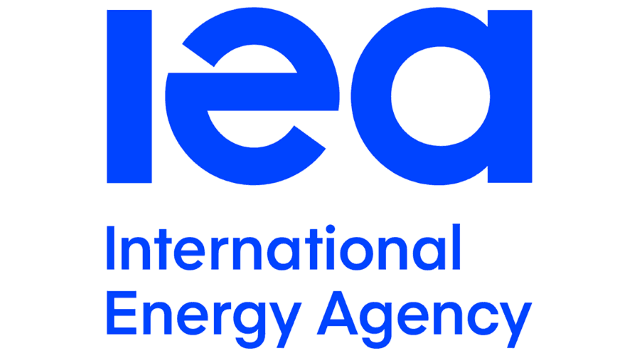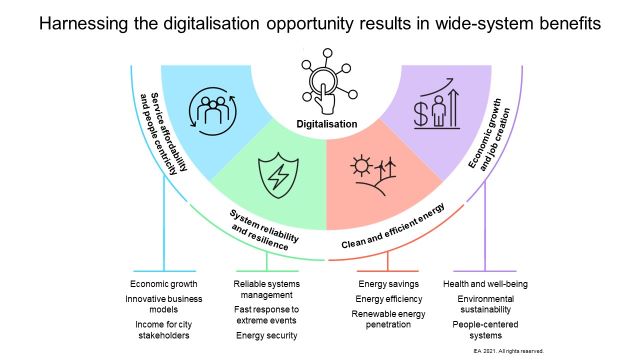
The energy sector has a central role in creating a more sustainable future. We are witnessing the various impacts of the climate crisis, which highlights the need for more and stronger commitments from governments, and the urgency to accelerate clean energy transitions. - Emi Bertoli, Energy Policy Analyst at IEA (International Energy Agency)
Billions of tons of CO2 are released every year due to coal, oil, gas production and more. Greenhouse gas emissions are causing temperatures to rise, which causes glaciers and ice sheets to melt faster and sea levels to rise. Data within the last five years have shown extreme temperatures of hot and cold in many parts of the world, and it has caused a myriad of other problems. Natural disasters such as hurricanes have been more frequent while climate change has caused huge changes in the marine ecosystem as well as make food security more precarious. If the world does not reduce emissions by half by 2030 or achieve net-zero emissions (carbon neutrality) by 2050, then temperatures could rise by more than two degrees Celsius, causing further irreversible and catastrophic damages to the world and humanity. Luckily, organisations like IEA (International Energy Agency) and analysts like Ms. Emi Bertoli have put together a roadmap to achieve net zero called Net Zero by 2050: A Roadmap for the Global Energy Sector, and other publications that show the current global state and what can be done to achieve carbon neutrality by 2050.
Ms. Emi Bertoli was an esteemed speaker in the past AWC (AI World Congress) 2021 in Busan on 1-2 September 2021, and she highlighted areas in energy the world can improve on to reduce carbon emissions and achieve the net-zero targets. Ms. Bertoli’s session and other sessions of AWC 2021 in Busan can be found here.

Introduction
My name is Emi Bertoli and I am an Energy Policy Analyst within the Energy Efficiency Division at the International Energy Agency (IEA). I lead the work of 3DEN (Digital Demand-Driven Electricity Networks) Initiative on advanced digital technology solutions. In 3DEN, we are exploring how progresses in power system modernisation and effective utilisation of distributed energy resources can be accelerated through policy, regulation, technology and investment. I am looking in particularly at the policy and technology aspects.
What does it mean to be an Energy Policy Analyst and what other works are you involved in within IEA?
As an Energy Policy Analyst at IEA, I analyse and translate the latest digital technology trends and policy developments related to the electricity sector into clear concepts, tool and recommendations. The aim is to support government and stakeholders by enabling them to make well-informed decisions and move towards cleaner, more resilient and sustainable energy systems. Part of my role is to convene with relevant stakeholders, support the creation of communities of practice, and organise events with the goal of exchanging and disseminating knowledge across different regions while advancing global dialogue on energy.
Given the IEA’s holistic approach, I work closely with many colleagues within IEA to ensure that we share our relevant analysis and insights to help and benefit from one another. I also collaborate with independent groups of experts and those within the TCP (Technology Collaboration Programmes).
Global climate change demands sustainability, especially in the energy sectors as the world is aiming for carbon neutrality (net zero). Sustainable development requires economic, environmental and social sustainability that is both integrated and balanced. Of the three, what do you think is the most important for sustainability in the energy sector? And what is the current state in the energy sector?
The energy sector has a central role in creating a more sustainable future. In IEA’s Net Zero by 2050: A roadmap for the global energy system report, we identified a pathway for the global energy sector to reach net zero (emissions) while maximizing technical feasibility, cost-effectiveness and social acceptance.
Governments and the private sector are becoming more conscious of how people are important in this whole process. However, more is needed to support inclusive clean energy transitions that can truly enhance social and economic development. The transition to net zero could create 14 million jobs by 2030. In the process, some communities and individuals may suffer from job losses, so this is something that needs to be carefully addressed to minimise any unnecessary losses, negative consequences or hardships. At IEA, we have brought together government leaders and prominent thinkers under a “Global Commission on People-Centred Clean Energy Transitions”, a commission of currently 30 members to advance clean energy technologies successfully by using a people-centric approach. The commission recommends how government can make a more inclusive and equitable clean energy policies that empowers and benefits people and communities.
As for the current state of the energy sector, we are witnessing the various impacts of the climate crisis, which highlights the need for more and stronger commitments from governments, and the urgency to accelerate clean energy transitions. Energy systems need to transform to be able to integrate increasing shares of solar and wind power, to expand the scale and scope of energy efficiency, and to create opportunities for consumers to participate more actively. But this needs to happen in a way that ensures that energy supplies are reliable, affordable and accessible to everyone. Digital technologies are essential and powerful tools that are vital in this transformation.
How can digitalisation practically support the energy sector to reach net-zero emissions?
Digital tools allow us to collect, combine and analyse data, monitor, control and optimise dynamic flows of energy. This results in effective policy making, planning and management of the energy system. Digitalisation can also provide more information to consumers, allowing them to make better choices.
For example, smart transport management tools and predictive analytics can improve services and increase the number of public transport users. They can reduce congestion by 8% and, as seen in Seoul, improve travel time by 30%.
In the buildings sector, digitalisation and smart controls, such as smart sensors and thermostats, can allow a reduction in cumulative emissions of 350 Mt (megatonnes) of CO2 by 2050, as shown by IEA analysis.
More broadly, advanced spatial energy planning, including GIS and digital twins, can help to identify priority areas for energy efficiency interventions, to estimate projected generation or to map the potential of distributed energy resources.
It is estimated that by 2021, there will be 83 billion connected devices and sensors, producing a wealth of data. However, only a small fraction of this data is currently being analysed and used. This represents a huge opportunity not to be missed. In this process, it is fundamental for data systems to be robust and secure against cyberattacks and for data privacy to be well protected.
With the whole world racing towards net-zero emissions (carbon neutrality), where do you see opportunities and areas to focus on?
I would say that one of the main areas of focus should be on cities. They account for more than 50% of the global population, two-thirds of global energy consumption and more than 70% of annual global carbon emissions. Cities are expected to grow massively, resulting in an enormous increase in demand for urban energy infrastructure. More than 70% of the world’s population will live in cities by 2050, and in terms of buildings space, a city the size of Paris is added to the world every week.
In our analysis on Empowering Cities for a Net Zero Future, we have seen that, given their scale and concentration, cities can contribute to accelerating progress on clean energy transitions.
For example, they can shape urban planning and local regulation in a more sustainable direction, they can make public land available for the installation of clean energy infrastructure, such as solar PV or EV charging stations, and encourage the adoption of smart technologies. Cities could use public procurement as an opportunity to create more sustainable supply chains, especially for carbon intensive materials such as cement and steel, as well as to drive innovation and markets towards more efficient and cleaner solutions.
What roles do governments, institutions, organisation, and others play in achieving the net-zero emissions targets?
Reaching net zero emission targets will require a tremendous effort from all stakeholders at a local, national and international level. It will also require stronger collaboration networks, knowledge exchange and capacity building among different actors in different parts of the world.
Governments have the power to define priorities and to set the pace of the transformation needed to reach net zero emissions targets, as well as to ensure that the pathway to net zero is inclusive and equitable.
People have an active and important role to play to build more sustainable energy systems, for example by shaping their behavior in more efficient and cleaner ways, by taking part in public consultations or participatory budget initiatives, and by actively participating in providing flexibility to the system (for example by shifting their consumption through demand response programmes).
Research institutions, NGOs and the private sector are vital for building and sharing knowledge and driving the innovation and implementation of key technologies.
Private, international and multilateral financial institutions also have an essential role to mobilise funding and support projects to accelerate clean energy transitions.
Is there anything else you would like to add for our readers (audience) that we have not covered in the previous questions?
I would just like to say thank you for reading this interview and thank you to Chosun for giving me the opportunity to talk more about these important topics and our work. I hope I managed to provide useful information at this pivotal moment for the energy sector, and to raise your interest to learn more about these exciting issues. I think it is important to be aware of the changes that will affect our everyday life and that all of us can contribute to a more sustainable future.
I finally invite you to take a look at our website, where you can find a wide range of free reports, articles and data, and to follow us on Twitter and LinkedIn.
In 2015, there was the Paris Agreement, and the UN has announced its 17 SDG’s (Sustainable Development Goals), set various targets to achieve net-zero emission (carbon neutrality) by 2050 alongside many other countries, and will have its 26th UN Climate Change Conferences of the Parties (COP26) in Glasgow, UK on 31 October-12 November 2021. Since 2015, many countries have committed to carbon neutrality, but more is required to achieve the goal of net-zero emissions by 2050, before it is too late. An integral part of getting there will be on energy such as wind and solar power, utilising smart technologies such as AI to optimise and reduce CO2 emissions in cities and buildings. As the race to net-zero emissions heat up, so should the world’s passion and commitments to it.
